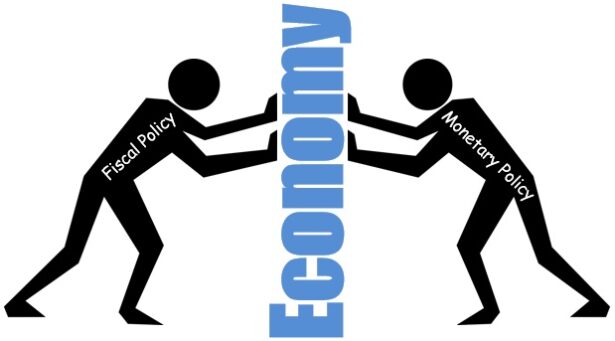The median one-bedroom rent is $1,414, a gallon of regular gas now costs more than $5 for the first time nationwide, and inflation hits a 40-year high of 8.6% in May.
The Federal Reserve, whose dual mandate is maximum employment and price stability, is digging deep in its monetary policy bag for ways to curtail inflation.
Inflation
Covid-19 forced businesses to halt productions and manufacturing plants and lay off millions of employees.
The government and the Fed implemented various fiscal and monetary policies to prevent another great recession. The government has infused nearly $5.9 trillion into the economy since the pandemic began in March 2020
Covid-19 economic relief was provided through tax cuts, grants, loans, and subsidies to small business owners, big private companies, nonprofit organizations, individuals, and more. Moreover, the Fed funded loans of up to $600 billion to institutional and multi-national firms. Those programs, as mentioned above, overstimulated the economy.
By early 2021, the marker of surging inflation started showing. However, the government and the Fed assured the American people that inflation would be transitory and that there was nothing to see here.
Quantitative Tightening
Now it’s more than evident that inflation is a permanent fixture of the economy, and American consumers are hurting each time they put gas in their car or go to the grocery store. Everything from used cars to bacon costs more.
Because the Fed ignored the inflationary signals that the economy started flashing last year, it needs to tighten its belt to stabilize prices. Quantitative tightening or reverse Quantitative easing is a set of tools in the Fed’s monetary toolbox.
Quantitative Easing or QE is a form of monetary policy. When the economy is in a recession or people who want a job can’t find one or both, the Fed buys long-term securities from the open market to increase the money supply and encourage lending and investments.
Quantitative tightening or QT is selling long-term securities while raising interest rates. Because of surging inflation, meaning too many dollars chasing too few goods, the Fed needs to do the opposite: selling long-term securities from the open market to decrease the money supply. Also, it has to increase the interest rates to discourage borrowing.
The Federal Reserve’s balance sheet is massive-$9 trillion dollars. Based on its March meeting notes, it started selling $60 billion worth of Treasuries and $35 billion in mortgage-backed securities in April. The Fed began to buy mortgage-back securities or MBS after the 2008-09 Financial Crisis to keep the housing industry stable.
Maximum employment is the second part of the central bank’s dual mandate. The unemployment rate is 3.6 percent. The record low U.S. unemployment rate gives the Fed the room its needs to continue with its aggressive quantitative tightening, especially its rate hike.







